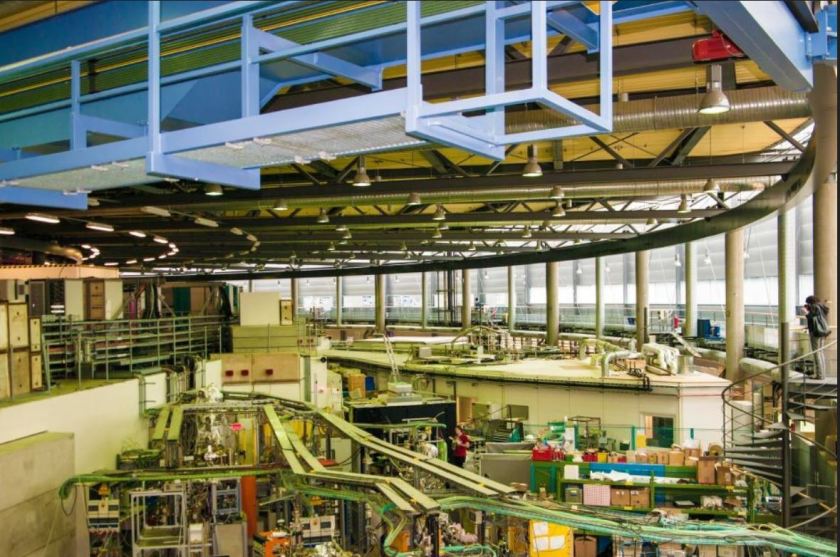Shutdown BESSY II: work has started

The experimental Hall of BESSY II. HZB / D.Butenschön
As of 30 July 2018, BESSY II will be down for several weeks. In the summer shutdown, important components in the storage ring tunnel will be replaced and overhauled. The first conversion work for the BESSY VSR project also begins. Upgrading BESSY II into a variable-pulse-length storage ring (BESSY-VSR) will provide unique experimental conditions for researchers worldwide. The shutdown lasts until 30 September 2018, and user operation will recommence on 30 October 2018.
While the ring is down, the HZB employees will be completely modifying the multipole wavelength shifter, the EDDI beamline and the radiation protection hutches. This space will be needed for installing the cold supply for the superconducting cavities in the storage ring. These are key components in the creation of BESSY VSR. Keeping them cold, however, requires an elaborate infrastructure, which is to be built up in the experimental hall over the next two years.
There is even more that has to be done during this shutdown: colleagues from the Institute for Accelerator Physics are constructing a diagnostics beamline for BESSY VSR in the vicinity of the EMIL hutch. In addition, the two wavelength shifters will be revised and further components (Landau cavities and a CPMU17) will be installed for the EMIL laboratory. Plus, a laboratory for electrochemical experiments on solid-liquid boundary interfaces (BEIChem) is to be built at BESSY II.
You can take a detailed look at everything that will be going on during the shutdown in the HZB Science Blog
(sz)
https://www.helmholtz-berlin.de/pubbin/news_seite?nid=14869;sprache=en
- Copy link
-
Green fabrication of hybrid materials as highly sensitive X-ray detectors
New bismuth-based organic-inorganic hybrid materials show exceptional sensitivity and long-term stability as X-ray detectors, significantly more sensitive than commercial X-ray detectors. In addition, these materials can be produced without solvents by ball milling, a mechanochemical synthesis process that is environmentally friendly and scalable. More sensitive detectors would allow for a reduction in the radiation exposure during X-ray examinations.
-
Electrical energy storage: BAM, HZB, and HU Berlin plan joint Berlin Battery Lab
The Federal Institute for Materials Research and Testing (BAM), the Helmholtz-Zentrum Berlin (HZB), and Humboldt University of Berlin (HU Berlin) have signed a memorandum of understanding (MoU) to establish the Berlin Battery Lab. The lab will pool the expertise of the three institutions to advance the development of sustainable battery technologies. The joint research infrastructure will also be open to industry for pioneering projects in this field.
-
BESSY II: Insight into ultrafast spin processes with femtoslicing
An international team has succeeded at BESSY II for the first time to elucidate how ultrafast spin-polarised current pulses can be characterised by measuring the ultrafast demagnetisation in a magnetic layer system within the first hundreds of femtoseconds. The findings are useful for the development of spintronic devices that enable faster and more energy-efficient information processing and storage. The collaboration involved teams from the University of Strasbourg, HZB, Uppsala University and several other universities.
